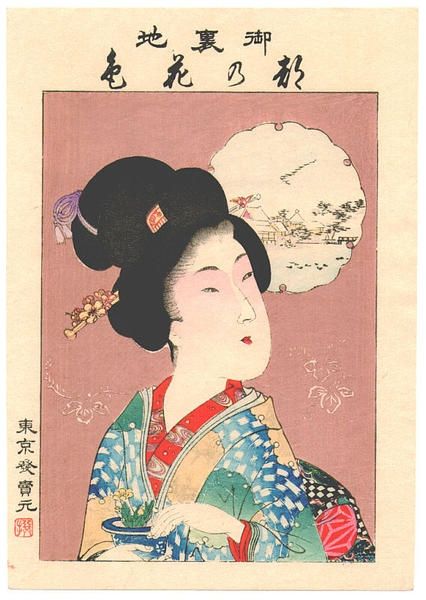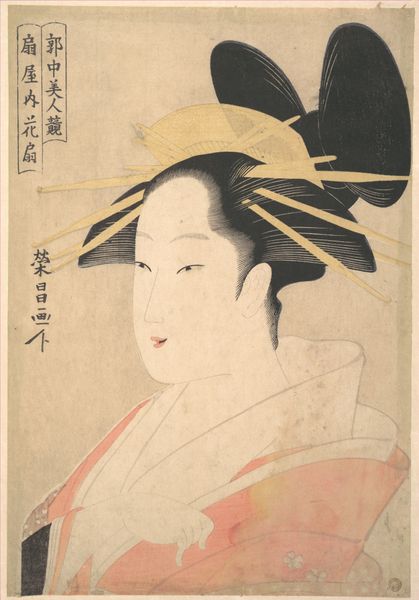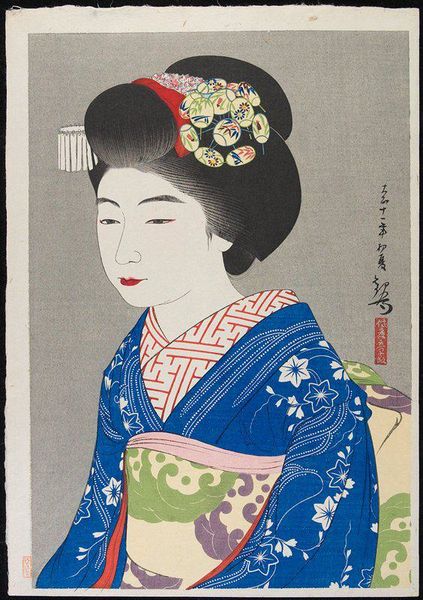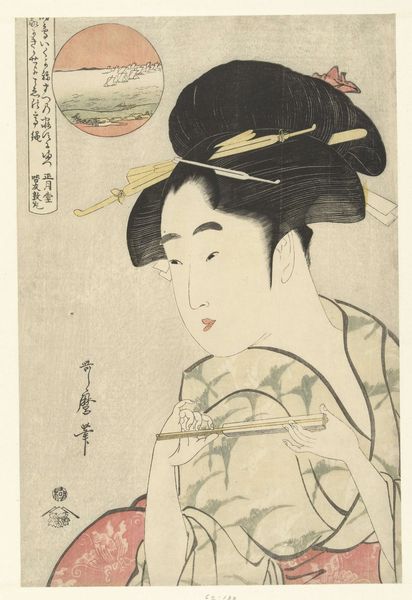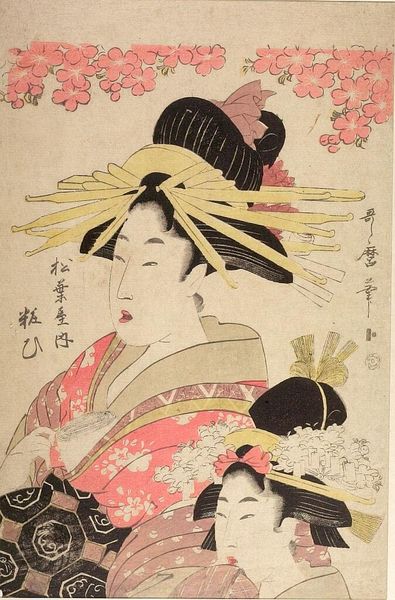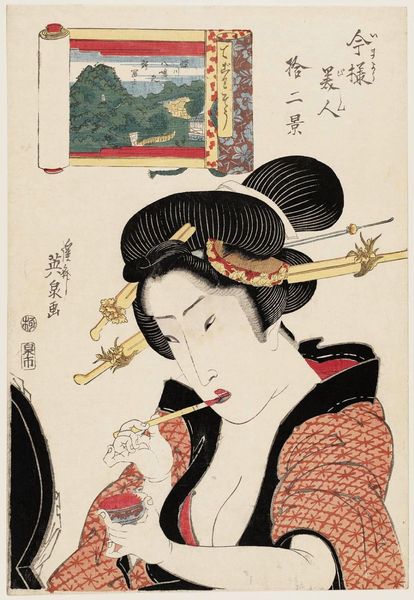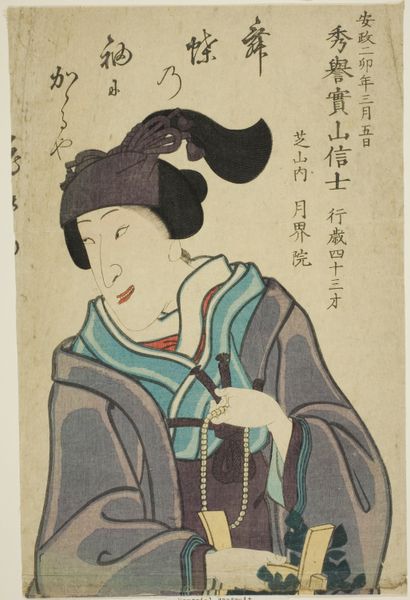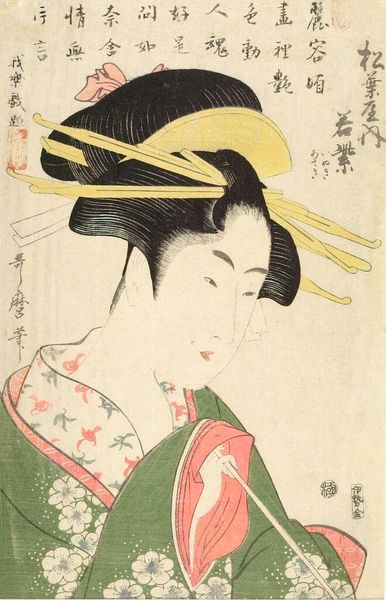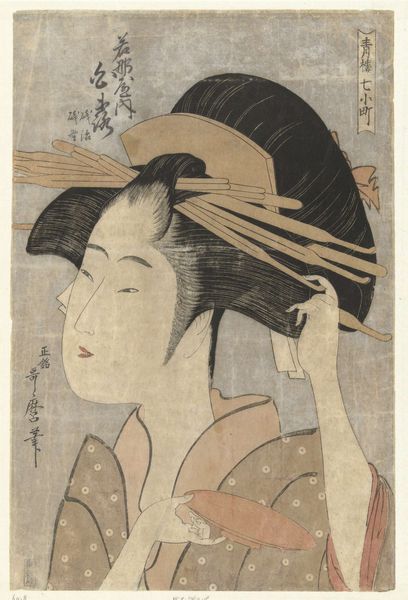
print, woodblock-print, woodcut
#
portrait
# print
#
caricature
#
asian-art
#
caricature
#
ukiyo-e
#
figuration
#
woodblock-print
#
woodcut
Dimensions: height 372 mm, width 255 mm
Copyright: Rijks Museum: Open Domain
Curator: This woodblock print, dating from around 1812 to 1816, presents Iwai Hanshiro V in the role of Yaoya Oshichi, created by the artist Utagawa Kunisada. Editor: The exaggerated features, the almost grotesque rendering... it’s initially unsettling, yet compelling. There’s an element of defiance in the gaze. Curator: Absolutely. Caricature plays a vital role in Ukiyo-e prints; here it perhaps exaggerates qualities associated with the actor and the character of Oshichi, the doomed maiden who set fire to a temple to see her lover again. Think of the exaggerated emotion conveying not just personality but culturally understood archetypes. Editor: Doomed is right. To look closer: we see here that Hanshiro's Oshichi, framed by these delicate floral hair ornaments, is still forced to endure systemic gender oppression, which literally lead to her execution. And she continues to be re-presented to us, framed by this violence and suffering in our contemporary museum space. Curator: These woodblock prints served multiple roles – portraiture, certainly, but also a popular media to propagate stories through widely distributed images, and like you point out to remind a collective audience about well known myths. Note the beauty standards emphasized through the makeup and hair style. It tells us how such representation helps perpetuate or disrupt tradition through exaggeration. Editor: Tradition... Yes, I’m sure these prints of celebrated actors played their part in upholding the highly restrictive class structure of the Edo period as much as in representing a space for self-expression and potentially queer desire. Let us think critically of the complicated history. Curator: It speaks to how icons are built: layer upon layer, performance upon received idea, resulting in meaning constantly shaped and reshaped by new contexts. Editor: Agreed, it forces us to re-evaluate the role these seemingly decorative, conventional pieces might play in upholding existing power structures. We have a duty to question, even admire something beautiful as also politically contentious.
Comments
No comments
Be the first to comment and join the conversation on the ultimate creative platform.
